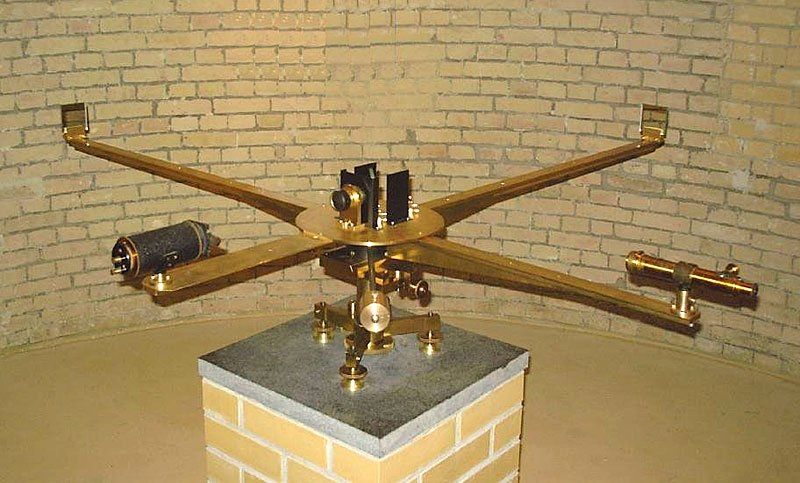The Michelson Interferometer
"My greatest inspiration is a challenge to attempt the impossible." Albert A. Michelson
The measuring instrument, named after the physicist Albert A. Michelson, became famous in 1881 through the Michelson-Morley experiment conducted in Berlin and Postdam.
The aim of the experiment was to provide evidence of the existence of ether. According to the state of research at the time, ether was the carrier medium that was responsible for the propagation of light. After a failed experiment in Berlin, which was significantly affected by the heavy traffic, the measuring equipment was relocated to the observatory in Potsdam, and the series of measurements from April 5 to 15, 1881 [2]
The results of the experiment were published in the American Journal of Science [1] and the metrological arrangement that Michelson had used in his experiments has been named since then by his name.
Michelson's experiments did not bring the expected results, because the assumption of an ether freely flowing through solid matter did not apply and the expected changes in the interference pattern during the rotation of the measuring device did not appear.
The correct interpretations were provided in 1905 by Albert Einstein with his theory of relativity, the important bases of which are the observations of the Michelson experiment described above.
Albert A. Michelson received a Nobel Prize [6] for his work in 1907 and thousands of people around the world use measuring devices to measure length, angles, straightness and vibration, the measuring arrangement of which is known as the "Michelson interferometer".
Michelson-Haus (PIK)
In the basement of the Potsdam Institute for Climate Impact Research
you can see a reconstruction of the Michelson Interferometer.
Photo: Dierck-E.Liebscher
References
[1] Albert A. Michelson, The relative motion of the earth and the Luminiferous ether; American Journal of Science (1880-1910); Aug 1881; 22, 128
[2] J. Wempe: Das Koenigliche Astrophysikalische Observatorium bei Potsdam, Mayer & Mueller, Berlin 1890; Die Sterne, 1975, 51: 199.
[3] Lebenslauf von Albert A. Michelson
[4] Biographical memoir of Albert Abraham Michelson
[5] Albert A. Michelson: A virtual tour of a life in science
[6] Der Nobel Prize in Physics 1907 for Albert A. Michelson
Interesting videos on the topic of interferometry
On the relative motion of the earth and the luminiferous Æther
On a method of making the wave-length of sodium light the actual and practical standard of length
On the application of interference methods to astronomical measurements
On the application of interference-methods to spectroscopic measurements.—I
On metallic colouring in birds and insects





